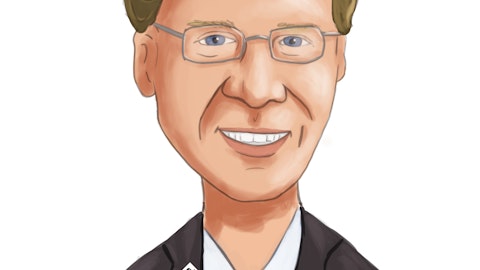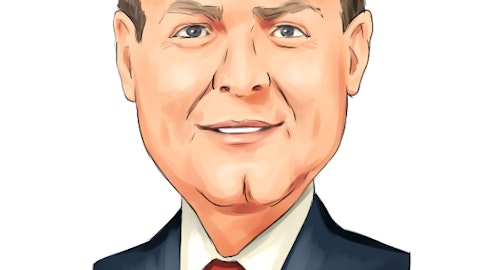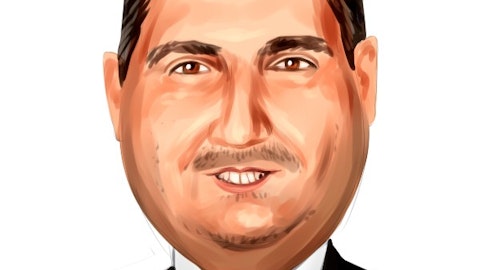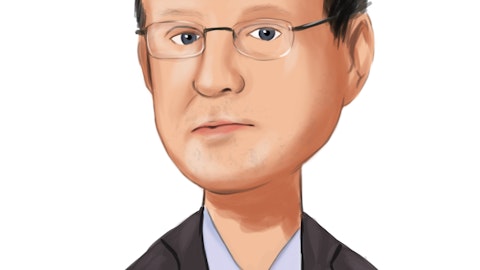Palmer Proctor: And Brady, to your question on non-interest bearing, there’s two sides of the equation. One is retention of existing accounts and then the other is focusing your efforts on attracting new deposits, non-interest bearing deposits. So when you look at our — whether it’s our incentive plans or our treasury management efforts, or our commercial banking efforts, those all are and had been centered around that. So, I think that helps mitigate some of the additional downside that we are not feeling but some others are at this point.
Brady Gailey: Okay. All right. Then moving on to expenses. I mean, Nicole, as you said, great expense control with expenses down like quarter in 3Q. How are you thinking about expense creep as we head into 4Q and next year?
Nicole Stokes: Yeah. So there is M&A. I hope everybody saw that in the presentation that we did have part of the expense control or the reduction expenses was actually a gain on a piece of Oreo. That was about $1.5 million credit or benefit that I don’t necessarily expect going forward. And so I think that has to be added back almost immediately. And so if you look at kind of our year-to-date run rate of about $429 million, if you annualize that, that kind of comes to us about $574 million. That leaves about $145 million — $144.5 million, $145 million for the fourth quarter. I think that’s right where consensus has us and I think that’s about right. And then if you take that, I think I’ve guided at 3% to 5% increase in expenses excluding mortgage for next year.
So if you assume mortgage production is flat and you say mortgage expenses are flat and you kind of take that out, kind of a 3% growth on that is about $590 million, that’s right in line with current consensus. So I think my messaging on expenses has been well received or understood and everybody’s model, it kind of that 3% to 5% expense growth that I mentioned last quarter, I still think that kind of 3% to 4% is about right. If you want to break it down a little bit further, I think salaries and benefits is probably 3% to 5%. Everything else is 2%. So that kind of blends out to be about a 3% total increase in expenses next year, which I think is in line with the current consensus.
Brady Gailey: All right. That’s helpful. Then finally for me, you hit 9% plus TCE. The stock is cheap at 11% (ph) tangible book value. You’ve repurchased a little bit of stock year-to-date, but not a ton. I mean, should we think about the buyback becoming a little more active here or do you think there is still in capital, growth mode?
Palmer Proctor: Well, I would tell you that we, kind of remain opportunistic in that regard. And that’s why we’ve renewed the program, obviously. And if and when we feel appropriate, we will certainly take advantage of that.
Brady Gailey: All right, great. Thanks for the color, guys.
Operator: Our next question comes from Casey Whitman from Piper Sandler. Please go ahead with your question.
Casey Whitman: Hey. Good morning.
Nicole Stokes: Good morning, Casey.
Casey Whitman: Hi. Okay. So Palmer, appreciate that there was some seasonality this quarter in just the warehouse balances. But can you speak to sort of how you’re seeing loan growth in this environment? Do you see that slowing a bit, just an update as to where you see growth over the next year or so?
Palmer Proctor: Yeah. Casey, I think with all banks, which you’ve heard is just kind of, as I mentioned earlier, people just being more discerning, and then obviously the opportunity that the industry has right now is to really take advantage of the upside of rates on the asset side of the balance sheet due to the rapid increase we’ve seen on the liability side. So we’re kind of utilizing this time to reprice accordingly to hold margin and build margin as we go forward. And I think that we’re being far more selective in our credits, obviously, we’ve said from the very beginning that we’re not going to allow our loan growth to outpace our deposit growth and that discipline will continue, and obviously, when you take that approach, it will slow down growth.





